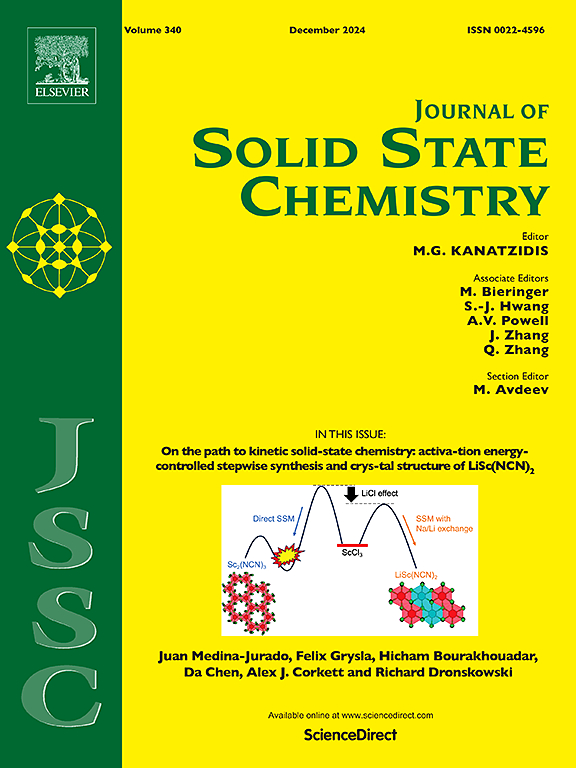Study of chemical bond characteristics and microwave dielectric properties in Al2O3-substituted BaSi2O5 ceramics
IF 3.2
3区 化学
Q2 CHEMISTRY, INORGANIC & NUCLEAR
引用次数: 0
Abstract
BaSi2-xAlxO5-x/2 (x = 0–0.05) low-dielectric ceramics were prepared by the solid-phase method. The effects of heterovalent ion substitution on the crystal structure and microwave dielectric properties were studied. X-ray (XRD) diffraction revealed that they formed single-phase solid solution with orthorhombic structure. Appropriate amount of Al3+ doping decreased the sintering temperature from 1225 °C to 1150 °C. The change in dielectric constant (εr) resulted from the combined effects of the ionic nature of chemical bonds (fiave) (internal factor) and the relative density (external factor). Si–O bonds contributed more significantly to the ceramic dielectric polarization. The increase in packing density and lattice energy (UTotal) enhanced the quality factor (Q×f), which nearly tripled compared with the undoped case. The resonant frequency temperature coefficient (τƒ) was dominated by oxygen bond valence (Vo). When sintered at 1150 °C for 4 h, BaSi1.98Al0.02O4.99 exhibited optimal performance: εr = 7.56, Q×f = 41,878 GHz, τf = −17.65 ppm/°C. This study offered a new approach to modifying BaSi2O5 ceramics.

al2o3取代BaSi2O5陶瓷的化学键特性及微波介电性能研究
采用固相法制备了BaSi2-xAlxO5-x/2 (x = 0-0.05)低介电陶瓷。研究了异价离子取代对晶体结构和微波介电性能的影响。x射线衍射结果表明,它们形成了具有正交结构的单相固溶体。适量Al3+的掺杂使烧结温度从1225℃降低到1150℃。介电常数εr的变化是化学键的离子性质(内部因素)和相对密度(外部因素)共同作用的结果。Si-O键对陶瓷介质极化的影响更为显著。填充密度和晶格能(UTotal)的增加提高了质量因子(Q×f),与未掺杂的情况相比,质量因子几乎增加了两倍。谐振频率温度系数τ f主要由氧键价(Vo)决定。在1150℃烧结4 h时,BaSi1.98Al0.02O4.99的烧结性能最佳,εr = 7.56, Q×f = 41878 GHz, τf = - 17.65 ppm/°C。本研究为改性BaSi2O5陶瓷提供了新的途径。
本文章由计算机程序翻译,如有差异,请以英文原文为准。
求助全文
约1分钟内获得全文
求助全文
来源期刊

Journal of Solid State Chemistry
化学-无机化学与核化学
CiteScore
6.00
自引率
9.10%
发文量
848
审稿时长
25 days
期刊介绍:
Covering major developments in the field of solid state chemistry and related areas such as ceramics and amorphous materials, the Journal of Solid State Chemistry features studies of chemical, structural, thermodynamic, electronic, magnetic, and optical properties and processes in solids.
 求助内容:
求助内容: 应助结果提醒方式:
应助结果提醒方式:


